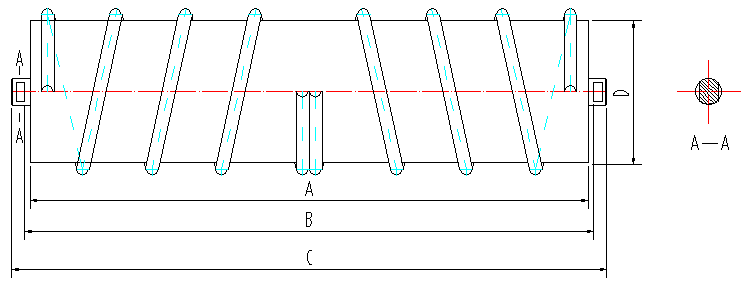 Afrikaans
Afrikaans  Albanian
Albanian  Amharic
Amharic  Arabic
Arabic  Armenian
Armenian  Azerbaijani
Azerbaijani  Basque
Basque  Belarusian
Belarusian  Bengali
Bengali  Bosnian
Bosnian  Bulgarian
Bulgarian  Catalan
Catalan  Cebuano
Cebuano  Corsican
Corsican  Croatian
Croatian  Czech
Czech  Danish
Danish  Dutch
Dutch  English
English  Esperanto
Esperanto  Estonian
Estonian  Finnish
Finnish  French
French  Frisian
Frisian  Galician
Galician  Georgian
Georgian  German
German  Greek
Greek  Gujarati
Gujarati  Haitian Creole
Haitian Creole  hausa
hausa  hawaiian
hawaiian  Hebrew
Hebrew  Hindi
Hindi  Miao
Miao  Hungarian
Hungarian  Icelandic
Icelandic  igbo
igbo  Indonesian
Indonesian  irish
irish  Italian
Italian  Japanese
Japanese  Javanese
Javanese  Kannada
Kannada  kazakh
kazakh  Khmer
Khmer  Rwandese
Rwandese  Korean
Korean  Kurdish
Kurdish  Kyrgyz
Kyrgyz  Lao
Lao  Latin
Latin  Latvian
Latvian  Lithuanian
Lithuanian  Luxembourgish
Luxembourgish  Macedonian
Macedonian  Malgashi
Malgashi  Malay
Malay  Malayalam
Malayalam  Maltese
Maltese  Maori
Maori  Marathi
Marathi  Mongolian
Mongolian  Myanmar
Myanmar  Nepali
Nepali  Norwegian
Norwegian  Norwegian
Norwegian  Occitan
Occitan  Pashto
Pashto  Persian
Persian  Polish
Polish  Portuguese
Portuguese  Punjabi
Punjabi  Romanian
Romanian  Russian
Russian  Samoan
Samoan  Scottish Gaelic
Scottish Gaelic  Serbian
Serbian  Sesotho
Sesotho  Shona
Shona  Sindhi
Sindhi  Sinhala
Sinhala  Slovak
Slovak  Slovenian
Slovenian  Somali
Somali  Spanish
Spanish  Sundanese
Sundanese  Swahili
Swahili  Swedish
Swedish  Tagalog
Tagalog  Tajik
Tajik  Tamil
Tamil  Tatar
Tatar  Telugu
Telugu  Thai
Thai  Turkish
Turkish  Turkmen
Turkmen  Ukrainian
Ukrainian  Urdu
Urdu  Uighur
Uighur  Uzbek
Uzbek  Vietnamese
Vietnamese  Welsh
Welsh  Bantu
Bantu  Yiddish
Yiddish  Yoruba
Yoruba  Zulu
Zulu tail pulley
The Importance of Tail Pulleys in Conveyor Systems
In various industrial applications, conveyor systems play a critical role in efficiently transporting materials from one point to another. Among the numerous components that make up these systems, the tail pulley is often overlooked but is essential for the safe and effective operation of belt conveyors. Understanding the tail pulley’s function, design, and maintenance can greatly enhance conveyor performance and longevity.
What is a Tail Pulley?
A tail pulley is an integral component of a conveyor system, situated at the downstream or discharge end of the belt. It serves multiple purposes, including supporting the weight of the returning belt, providing a surface for the belt to run on, and facilitating the tension required for effective material handling. Tail pulleys can be found in various shapes and sizes, tailored to meet the specific demands of different conveyor applications.
Function of Tail Pulleys
The primary function of the tail pulley is to maintain proper tension in the conveyor belt. This tension is vital to prevent slippage, ensuring smooth material transfer. The tail pulley also aids in the alignment of the belt, helping to reduce wear and tear and prolonging the service life of the conveyor system.
Moreover, tail pulleys contribute to the overall safety of the conveyor operation. A well-designed tail pulley minimizes the risk of belt misalignment, which can lead to accidents, equipment damage, and production downtimes. By ensuring the belt tracks correctly, the tail pulley plays a significant role in maintaining the efficiency of material transport.
Design Considerations
The design of tail pulleys involves careful consideration of various factors, including the type of material being transported, the environmental conditions, and the conveyor's operational requirements
. Tail pulleys are typically made from robust materials like steel to withstand the high stresses associated with heavy loads and continuous operation.tail pulley

Additionally, there are different types of tail pulleys, such as flat or crowned pulleys. Flat pulleys are commonly used in applications where precise belt tracking is essential, while crowned pulleys help to automatically align the belt, reducing the risk of lateral movement.
Maintenance of Tail Pulleys
Routine maintenance of tail pulleys is crucial to ensure their functionality and to extend the lifespan of the conveyor system. Regular inspections should focus on examining for signs of wear, misalignment, and proper tension. Any issues detected early can be addressed, thus preventing more significant problems in the future.
Lubrication is another essential part of tail pulley maintenance. Bearings typically require regular lubrication to ensure smooth operation, which helps in reducing friction and heat build-up. Over time, contaminants can accumulate in the lubricating grease, so it is important to replace it according to the manufacturer’s recommendations.
Technological Advances
Innovations in conveyor technology have also impacted the design and function of tail pulleys. Modern tail pulleys may incorporate features such as self-aligning designs, enhanced materials for improved durability, and even sensors that monitor the belt’s condition in real-time. These advancements enable operators to maintain higher efficiency levels and reduce unexpected downtimes.
Conclusion
In conclusion, the tail pulley is a crucial component of conveyor systems that often does not receive the recognition it deserves. Its contribution to maintaining belt tension, alignment, and safety is indispensable in various industries, from mining to manufacturing. To maximize the efficiency and reliability of conveyor operations, attention must be given to the design, maintenance, and technological enhancements of tail pulleys. By recognizing their importance, operators can ensure smoother operations and mitigate potential issues, ultimately leading to greater productivity and safety in their industrial processes.
-
Revolutionizing Conveyor Reliability with Advanced Rubber Lagging PulleysNewsJul.22,2025
-
Powering Precision and Durability with Expert Manufacturers of Conveyor ComponentsNewsJul.22,2025
-
Optimizing Conveyor Systems with Advanced Conveyor AccessoriesNewsJul.22,2025
-
Maximize Conveyor Efficiency with Quality Conveyor Idler PulleysNewsJul.22,2025
-
Future-Proof Your Conveyor System with High-Performance Polyurethane RollerNewsJul.22,2025
-
Driving Efficiency Forward with Quality Idlers and RollersNewsJul.22,2025





























